The Holocaust in Sephardi-Mizrahi Literature:
A Review of Some Responses in Prose
By Judith Roumani1
Introduction
The Nazi Wannsee Conference's January 1942 plan embodying the 'Final Solution' was to extend the Holocaust to North Africa. The envisaged annihilation of North African Jews did not come to fruition because the Nazis were preoccupied with fighting the Allied advances. In the heavily Sephardic Jewish communities of the Balkans, though, the proportionate death toll was as high as among Ashkenazi communities. Italian Fascist camps in the desert in Libya allowed hundreds to die. The 160,000 Balkan Sephardim lost are among the possibly 200,000 overall Sephardim who perished. Known death toll proportions include ninety-six percent of Salonikan Jewry and roughly eighty percent of Sephardic Balkan communities. Besides the human tragedy, there was a cultural tragedy, as a language came close to extinction: Ladino, or Judeo-Spanish.2
My interpretation of "Who are the Sephardim?" calls for clarification. As a broad definition, Sephardim are typified by several distinct correlating factors including: custom [minhag], religious laws [halakha], music and ritual [nusach]—an amalgam with small variations among Mediterranean and Middle Eastern Jews, i.e. those who lived either in Mediterranean European countries or in the former Ottoman Empire and the Middle East. I recognize, though, that in more recent times, the history, experiences and especially language of Balkan and Turkish Sephardim who originated in Iberia (not to mention the Western Sephardim who emigrated from Iberia to Western Europe or the Americas) have differed from those of the Middle Eastern countries. Without implying any hierarchy, this leads us to draw a valid scholarly distinction between Sephardim, who may be of Ladino/Judeo-Spanish culture, and so-called Mizrahim, usually of Judeo-Arabic culture.
Today, I will talk briefly about seven writers: Isaac Ben-Rubi, originally of Salonika, later of Israel; Albert Memmi, of Tunisia and France, Clarisse Nicoïdski, whose family was from the Balkans but who was born in France; Haim Vidal Sephiha, born in Belgium of Turkish Ladino-speaking parents, Patrick Modiano, born in France, but whose father was a Salonikan Jew. Memmi is presently the archetypal representative for Sephardim of North African origin, but I also discuss Edmond Jabès of Egypt and Naïm Kattan of Iraq. I am omitting, for now, discussion of Albert Cohen, Moris Farhi, Nine Moati, Giorgio Bassani, David Albahari, Matilda Koen Sarano, and other excellent Sephardic writers who might have been mentioned.
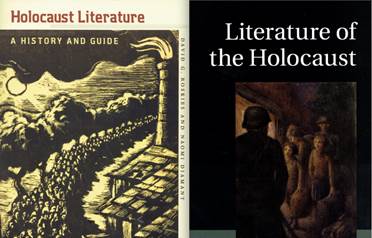
Of two recent approaches to literature of the Holocaust, the first (David Roskies' and Naomi Diamant's Holocaust Literature, A History and Guide, Brandeis, 2012), has minimal mention of Sephardic writers of the Holocaust, while the second (Literature of the Holocaust, edited by Alan Rosen, Cambridge, 2013), does have a full chapter on Sephardic writers. Why examine prose and not poetry of the Holocaust? Practically speaking, there are already two books about Sephardic poetry of the Holocaust (by Isaac Jack Levy and Shmuel Refael), but none devoted to prose. I would be interested in establishing whether there is a continuum between oral testimony, written narratives of which there are quite a few, and prose fiction. While certainly intriguing, I am not sure whether it is consistently possible to successfully compare the genre of fiction to documented historical events.
Moreover, the historical record always has lacunae; witnesses' accounts can conflict, testimonies given many decades after the events may sometimes be vague or embellished, memory can be faulty or influenced by later experiences, and many of the only genuine witnesses may have already perished. Here, fiction steps in and adds the element of imagination. Most writers of Holocaust fiction seem to be very respectful of history, and of what has been forgotten; they try to enable readers to fill in the gaps aided by imagination.
Itzhak or Isaac Ben-Rubi
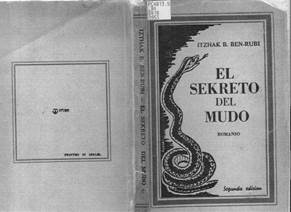
Ben-Rubi was born in Salonika, the Jerusalem of the Balkans and eventually became an Israeli citizen. He is the only writer of novels in Ladino (that I am aware of), after the Holocaust, though there are many memoirs by Sephardim (in Greek, Italian and Hebrew) and there is a small amount of Ladino poetry. Ben-Rubi also had a radio program in Ladino during the 1950s, and published an anthology of his radio chats. Additionally, he wrote and published two or three plays and novels that he calls 'novelas' or 'romansos'. The book I will discuss is termed a 'romanso' yet I am not sure how that makes it different from a novel. Perhaps the subject matter is considered lighter by the author. It was subsidized by the association of Greek Jewish survivors and exists in two editions. It is now very rare, found in perhaps three to four libraries around the world. The crumbling, cheap paper jacket has a drawing of a snake on the cover and inside on the title page a warning: "Tanto que en el 1945, el mundo no iso todo por destruir radicalmente al monstruoso serpiente hitleriano. El periculo de verlo un dia salir de su endormeciento pesga siempre sobre la humanidad!" [Since in 1945 the world did not do everything to totally destroy the monstrous serpent of Hitler, the danger that we will see it one day emerge from its slumber stills hangs over humankind!].His spelling is not standard Ladino, but shows French, Italian and Castilian influences. The title of this 1953 work, El Sekreto del mudo [The Mute One's Secret] can perhaps be linked to the impending silence of Ladino prose literature. Just as the Sephardic world was falling into silence after the Holocaust (due to the death of authors as well as an audience for the poetry, plays and fiction) so this novel deals with a character who at Auschwitz was either struck dumb by his traumas or refused to talk in protest against what he saw going on around him. By way of a series of miracles and the support of kind friends 'el mudo' survives the camp and the war, returning to Salonika to find it empty of Jews, devastated and with its Jewish cemetery uprooted and destroyed. This is a romantic novel in the sense that happy endings come about: he returns to the cemetery to dig up a treasure he had hidden there, by the feet of his favorite rabbi, and though most graves have been vandalized and despoiled he finds the treasure and succeeds in selling it. Now a wealthy man, he sets off to France in search of his lost beloved. Finding her in southern France, they begin a new life. In the end, this may not be an autobiographical or realistic novel, nor is it deep literature, but it expresses the wishful thinking of someone who was close to the Holocaust. It was popular enough to be translated into French in the nineteen-seventies, and it is likely that, in fact, more people will have read the French translation, Le Muet de Auschwitz, than the original.
Continuing our survey of Sephardi-Mizrahi Holocaust literature, we shift from Romanticism to Realism and from Greece to Tunisia.
Albert Memmi
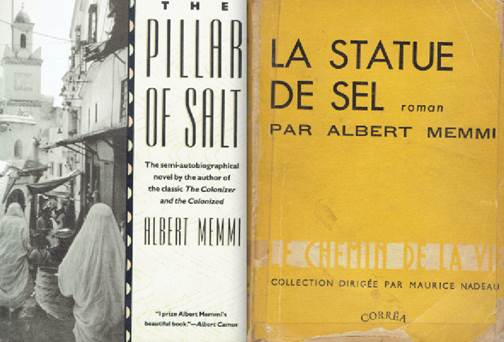
Although one cannot assume that novels are necessarily autobiographical, Albert Memmi's account of his experiences under Nazi occupation in Tunisia, told by his fictional character, Alexandre Mordechai Benilouche in La Statue de Sel (1953), is probably very close to the way things actually happened. For some months between 1942 to 1944, Tunisia was occupied by the Nazis in order to bolster the Axis defense of North Africa. They took the leaders of the Jewish community of Tunis hostage and demanded several thousand Jewish laborers be sent to dig trenches for the Nazi battle lines on both sides of Tunisia. The work was dangerous and exhausting, disease spread, conditions were terrible and if the Axis powers had won, the Wannsee plan was to murder the Jews of North Africa along with European Jews. Albert Memmi tells of his experience of forced labor in his novel and also meditates on how he himself did not fit in either with the wealthy and well-educated Jewish men or with the traditionally educated poorer class, whose Judeo-Arabic he was by university age quite uncomfortable with, though it had been his mother tongue. He did turn out to be something of a natural leader, though, and as the Nazi defenses crumbled, he helped a group of Jews escape, cross the battlefield and return to Tunis, an act that must have taken some courage. This situation, like many others described in his texts, emphasizes the author's and his alter egos' alienation from society, their inability to fit in. Alexandre had eagerly identified with the ideals of French civilization, but when he sought help for himself and his family from a high official of the French colonial administration, he was rejected ignominiously, despite believing previously that these people were his friends. In many situations, Memmi sets up his alter ego as an idealistic, trusting and, we eventually realize, somewhat naïve person, whose trust in others is repeatedly disappointed. Thus, the wartime conditions are, from a literary point of view, ideal for exposing the character's naiveté, an ostensibly comedic literary device if the situation were not so tragic and a device Memmi employs in later novels as well. After his escape, Alexandre tries to join the Free French Forces, but is turned down because they do not want Jews. I am not sure about the historical accuracy of this, as there are accounts of Algerian Jews, permitted to enlist and fight the Nazis,3 but perhaps circumstances varied from country to country, the status of Jews in Tunisia, after all, being different from that of Algerian Jews. It may have depended on whether they had pre-war military experience or were inexperienced like Alexandre. The only other event that may somewhat contradict the historical record in this book is Memmi's placing a pogrom during the war years in Tunis. Though no such event occurred in that locality, he may perhaps, for novelistic reasons, be transposing events from Libya (1945) or Iraq (1941) in those years. He is, of course, making the point that the Jew is an outsider, a stranger, neither colonizer nor colonized, and in his Portrait d'un Juif [Portrait of a Jew] (1962) he makes the case that Jews truly belong only in their own land. Memmi actually left Tunisia for good in 1956, settling in Paris to become a sociologist and novelist. He has maintained his contacts with Tunisia until today, and in 1984 won its most prestigious literary prize. This novel, blending autobiography and artistry, is his most celebrated novel, though it cannot really be defined as a true Holocaust novel since the Holocaust occupies only two chapters. On balance we see the Shoah and Memmi's experiences of the Nazi period in the novel as just one element in the vast historical process that was uprooting indigenous North African Jews from their ancestral homelands and launching them toward Europe, the Western Hemisphere, or Israel.
Clarisse Nicoïdski
The poetry and fiction of Clarisse Nicoïdski returns us to the world of Ladino-speaking Sephardim. In this case her family was from the Balkans and she writes Ladino poetry in the particular dialect that we find in Flory Jagoda and others from the former Yugoslavia. Her family was living in France and was in semi-hiding in Lyons during the Nazi period. In Couvre-feux [Curfew](1981) we have a child's-eye view of the Nazi occupation, and its terrors, interspersed with the older generation's Ladino phrases. The shut-in and extremely bored four-year-old knows what will bring fear to her mother's eyes and asks such questions as "Maman, do the Nazis really exist?" Her mother reacts with a stream of Ladino prayers and curses and insists that they touch some garlic to fend off the evil eye. She is susceptible to asthma and has a very bad attack that evening. The fear and the asthma have both entered her lungs and she mumbles incoherently, scaring her daughter. The novel is to some extent tragic-comic, though, as the fears of the mother are not realized, and the whole family survives the war in hiding. At a certain point the children are entrusted to an expensive Dickensian-style school/orphanage, where they are whipped and obliged to attend mass, but later the parents gradually come back to reclaim the children. The little girl's misunderstanding of what it is that threatens them leads to humor. For example, we often hear the phrase "Les Nazis, la Gestapo, la milice et toute la bastringue" [The Nazis, the Gestapo, the militia, and the whole merry-go-round/ the whole quadrille] (although this is not an exact translation of this final word, which is evocative of low-life and rowdiness, and we know that the threats facing these Jews amounted to far more than the bad manners or drunkenness that this word immediately implies). There are many diglossia in Ladino, especially prayers, as well as insults and curses on the Nazis. Ladino is "la langue des parents" [the parents' language] and Judith is amazed in the orphanage to hear other children's parents using a different language. Her mind is constantly asking questions, and her ears ("elle a l'oreille qui traine partout" [she is listening everywhere]) are always flapping, but in the absence of explanation she often comes to the wrong conclusions: she thinks "la Gestapo" must be a horrible old witch, that the Nazis eat Jewish children, that the couvre-feux is something like a fire engine, or fire truck as they say in America. What is real is the fear, which causes a particular sensation in the pit of her stomach, and the realization that even after Liberation and several days of celebration, the fears and nightmares do not go away so easily. The last scene is somewhat carnivalesque—at a school ceremony in memory of the heroes of the Resistance who lost their lives, little Judith is playing with matches, and inadvertently sets fire to the long and beautiful black lace mantilla that the schoolmistress is wearing in mourning for her husband. This novel is path-breaking for Sephardic novels of the Holocaust in the sense that it combines a lyrical surrealistic view of war and Holocaust with the use of diglossia from the Sephardic language.
Patrick Modiano
Patrick Modiano, though one of the most frequently published and lauded of modern French novelists, apparently until recently was very reticent about his life story. Though one can make too much of the connections between biography and fiction, in his case there are some strong connections. Though his mother was not Jewish, his father was a Greek Jew from Salonika who had initially moved to Italy, then to France. During the war, besides hiding his Jewishness, the father was involved in the black market, or may in some way have been a collaborator. His son Patrick was born in 1945, but for many years said it was 1946, perhaps in order to distance himself from the war and the paternal legacy. A popular writer of detective novels, nevertheless awarded many literary prizes, he was one of the first to portray the sleazy world of collaborators during the war, starting with his La Place de l'Etoile (1968). The title of this novel refers to a story about a Jew walking in Paris without his yellow star and who is stopped by a Nazi officer out sightseeing and looking for the Arc de Triomphe and who asks "Ou est la Place de l'Etoile?" The Jew, always naïve in such jokes, and who would have done better not to react, instinctively points to his left lapel and the place over his heart. Critics have accused Modiano of repeating anti-Semitic stereotypes in this novel and others, and perhaps for that reason this novel was never published in English translation. This is in contrast to Irène Nemirovsky's Suite Française which, although charged with the same issue, has nevertheless been translated. The particular novel to be discussed here is Modiano's Rue des Boutiques obscures (1978) which is a brilliantly realized tour de force. Though the French title refers to an intriguing street name in the old center of Rome, yet not in the ghetto, the English title is Missing Person. It is the story of an ex-detective who had lost all memory of who he is and where he came from; he chases up various unpromising leads using the methods that detectives use, such as a well-thumbed gazette or almanack (no googling in those faraway times of the nineteen-seventies), shows the usual cynicism of his profession, but through a combination of imagination, speculation and extraordinary luck, eventually realizes that he and his girlfriend or wife had been trying to escape the Nazis by crossing into Switzerland through a snowy forest. Naively trusting, they were cheated and abandoned by their guides, there is no more trace of her, and he seems to have nearly frozen to death in the snow, hence his almost total lack of memory. The book does not end with a satisfying conclusion: several clues are left dangling, and though the eager reader may suspect and hope to learn that the narrator, like the author's father, was a Greek Jew who had passed through Rome, the obscure Roman dealings, like his damaged memory cells, will always remain dark.
Edmond Jabès
Jabès was a Sephardic Jew originating from Egypt. In 1956, under Nasser's regime, the screws were tightened more and more on this most ancient of Jewish communities, some were imprisoned, almost all were expropriated, until the Egyptian Jews left their ancestral home almost penniless and made a new start in Israel or Europe. Edmond Jabès was one of these, moving to Paris and gradually, with great effort, reestablishing himself. He left behind in Egypt his library (he had already published as a poet) and his emotional roots. Soon after arriving in France, whose culture he had always idealized during his French education in Egypt, he discovered anti-Semitism, in the shape of graffiti on a wall. Somehow the individual trauma of leaving Egypt was transposed or displaced to the collective trauma of the Holocaust from which his own community had been largely spared but which was fully experienced by European Jewry. His novels are poetic, lyrical and surrealistic, lacking most of the elements of a conventional novel such as plot, psychology and a rational progression of events. He has, in fact, seven volumes (Le Livre des questions [The Book of Questions], 1963-1973) referring to the tragic relationship of a young couple that has come back from the camps; she has gone mad, though, and he is contemplating suicide. Their expressions and their plight are commented on by a sort of traditional chorus of rabbis and their students. Jabès has had broad influence on subsequent poets, philosophers and fiction writers of the Holocaust. Much of his enigmatic writing is somewhat inaccessible for those who prefer more traditional novels. The suffering, though, is raw and unadulterated.
Haim Vidal Sephiha
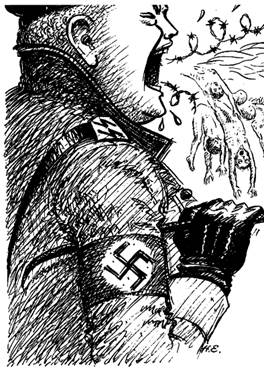
Haim Vidal Sephiha, essayist, linguist, teacher and poet, has recently donated his personal archive to the United States Holocaust Memorial Museum. He has written poetry in Judeo-Spanish, and also writes stories in French. He has been perhaps the main motivator of the revival of Judeo-Spanish studies in France, and has inspired a number of disciples. His book, L'Agonie des judéo-espagnols [The Agony of the Judeo-Spanish People] (1977, 1991), describes the tremendous tragedy that befell the Balkan Sephardic communities and also the depredations of the Holocaust on their cultural heritage, including their language. Though Yiddish managed to revive to some extent after the Holocaust as a literary language, apart from the novels of Isaac Ben-Rubi discussed above, and some stories by Matilda Koen Sarano, Ladino never did, except in poetry. Haim Vidal Sephiha has written about Sephardic proverbs and humor, and he also has Holocaust tales, e.g. Du Miel au fiel: contes judéo-espagnols [From Honey to Faith: Judeo-Spanish Stories] (1992) that are far from humorous. One in particular portrays the Jewish slave laborers who were put to work in the coal mines in Ukraine. This was the author's personal Holocaust experience, an experience of infinite Nazi cruelty, and despair on the part of the prisoners, who almost welcomed being shot for a minor infraction rather than continue the backbreaking work.
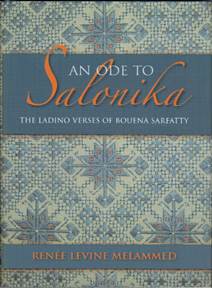
Haim Vidal Sephiha's work is therefore halfway between Holocaust memoir and fiction, something that has probably inspired other writers such as Clarisse Nicoïdski to produce fully realized novels. The emphasis on the Sephardic sense of humor, traditional wisdom, and the particular musical culture may have helped Sephardim survive longer, given them courage, or enabled them to hope, as some scholars have speculated. There was a famous choir, the Koro Saloniko of Auschwitz, and this song tradition of long or short kantigas originating from Spain also gave rise to the long epic poems of Bouena Sarfatty of Salonika. She managed to escape deportation and joined the Resistance and a collection of her work has just been published. In Sephiha's collection of stories, some in French and some in Judeo-Spanish, one story by Sara Golub-Konfino, recorded in Paris, but perhaps a traditional tale, relates how a Jewish woman in Turkey was saved from certain rape or death after three Turkish Muslims invaded her home. She started dancing and singing a loud song in Judeo-Spanish, calling for help, until eventually crowds of neighbors arrived, thereby saving her. Other Sephardim, in the same vein, have credited their knowledge of many languages for enabling their survival in the death camps (see the memoirs of Yaacov Handeli and David Galante). On the other hand, probably many Sephardim died at the hands of the Nazis sooner rather than later because they were not in the position of Ashkenazim whose Yiddish would help them understand the German-language orders.
Naïm Kattan
Naïm Kattan, a French-language writer from Iraq who now resides in Canada, wrote his first book Adieu Babylone [Farewell Babylon] (1975, 2005) as a semi-autobiographical novel discussing his childhood and youth in Baghdad. Well-educated in Arabic as well as in French (because of the Alliance school) as opposed to the English-language education of other Iraqi Jewish writers, the teenage narrator and alter ego has Muslim as well as Jewish friends, a distillation of how, in the nineteen-forties, many Jews aspired to become part of the new nation of Iraq as so-called 'Arab Jews'. However, as we know, Nazi influence and propaganda as well as those of the mufti of Jerusalem, Hadj Amin al-Husseini, were strong in Baghdad. During an interregnum in 1941, as British troops waited passively outside the city for several days, the terrible farhud was unleashed in Baghdad—a pogrom leading to the death of hundreds of Jews. Kattan recounts this, together with the fear of helpless Jewish families cowering in their homes as murderers and looters swept through the Jewish neighborhoods of the city. This was the beginning of the end for the Jews of Iraq. It might not be too much of a stretch to link the events in Iraq in 1941 with the anti-Semitism and Holocaust going on in Europe. In this fictionalized memoir, all the educated young people are leaving by the late forties and early fifties: the Muslims in order to further their education and return to build the new Iraq, and the Jews with a one-way ticket, either to Israel or to Western countries. Thus, the Jewish-Muslim friendships of the early idealistic years are forever broken.
The Questions I am Asking Myself Regarding this Literature
Is there any connection between this modern fiction and the other genres that Sephardim have used? For example, traditional kinot about the Shoah that we find in Tunisia or Morocco in Judeo-Arabic, or memoirs written and sometimes published by survivors, especially from Greece, or narrative poems such as those of Bouena Sarfatty describing what she saw in Salonika? A tentative response to the above is that the genres in languages that ceased to be used, such as Judeo-Arabic, probably had almost no influence on novelists, who usually have a Western-style education and are attuned to Western genres. Bouena's Ladino poems, though, are extremely realistic, even though they use traditional genres. It is likely that we can learn history from them and there may be some incidents that she describes for which we can find parallel descriptions in the Greek memoirs and perhaps in Ben-Rubi's novel. Thus, we may be able to link the traditional epic poem with a modern novel. Clarisse Nicoïdski's surrealistic poems can be connected with her child's eye portrayal of the fear of those in hiding from the Nazis, childhood fears magnified by her ignorance and misunderstanding of the Nazis. The mother's curses can be linked to Bouena's poems, as the latter has made a collection of four hundred curses. One can look at each novelist individually and consider possible links.
What links these writers as Sephardim, or Sephardim and Mizrahim, and how is it reflected in their work, making it worthwhile to discuss them as a separate category or categories? Is there something they all have in common? A tentative answer is that though their communities, and they themselves as Jews, all felt threatened by the Holocaust, the extent that they suffered was very different, besides the fact that they dealt with it in different ways and differing literary techniques. I think this very variety is interesting and instructive, and studying the literature in a comparative way helps us better appreciate how the Holocaust affected Sephardim as a whole.
Does literature that may have a popular appeal, for example Ben-Rubi's novel, or the novels of Patrick Modiano, betray the memory of the Holocaust by mixing some sort of aesthetic pleasure, or at least appreciation of a well-executed technique, with a recounting of the horrors? One could ask the same question for all of the Holocaust-based fiction and cinema of recent years. I suggest that at this distance in time, we are transitioning into a phase where memory may be merging into imagination, and novelists therefore do have a role in educating about the Holocaust. My conclusions, for now, are tentative.
Notes
1. Judith Roumani is the editor of Sephardic Horizons. This paper is based on a presentation delivered on Jan 29, 2014, at the United States Holocaust Memorial Museum. This article was made possible (in part) by funds granted to the author through a Sosland Family Fellowship at the Center for Advanced Holocaust Studies, United States Holocaust Memorial Museum. The statements made and views expressed, however, are solely the responsibility of the author. I am grateful for support, assistance and input from both staff and research fellows at USHMM.
2. For further clarification, see Rachel Amado Bortnick, "Shoa deskonosida," in Sephardic Horizons 3,1: Spring 2013
3. See the account by Albert Karsenti, "Arbres de vie" in Sephardic Horizons 3:2 (Summer 2013), www.sephardichorizons.org
Select Bibliography
Ben-Rubi, Itzchak. El Secreto del mudo [The Mute One's Secret]. Tel Aviv: Lidor, 1953.
Ben-Rubi, Itzchak. Le Muet d'Auschwitz [The Mute Man of Auschwitz]. Trans. André Chédel. Paris: LaPensée universelle, 1973.
Jabès, Edmond. Le Livre des questions [The Book of Questions]. Paris, Gallimard,1963-1973. Translated by Rosemarie Waldrop. Middletown, Conn: Wesleyan, 1976, 1983.
Kattan, Naïm. Adieu Babylone [Farewell Babylon]. Paris: Julliard, 1975. Translated by Sheila Fischman, 1976. Boston: Godine, 2007.
Levy, Isaac Jack. And the World Stood Silent : Sephardic Poetry of the Holocaust. Urbana: University of Illinois Press, 1989, 1999.
Melammed, Renée Levine. An Ode to Salonika: The Ladino Verses of Bouena Sarfatty. Bloomington: Indiana University Press, 2013.
Memmi, Albert. La Statue de sel. Paris: Corrêa, 1953.
Memmi, Albert. The Pillar of Salt. Trans. Edouard Roditi. 1955. Boston: Beacon Press, 1992.
Modiano, Patrick. La Place de l'Etoile. Paris: Gallimard,1968 ; 1975.
Modiano, Patrick. La Rue des Boutiques Obscures. Paris : Gallimard, 1978.
Modiano Patrick. Missing Person. Translated by Daniel Weissbort. Boston : Godine, 2005.
Nemirovsky, Irène. Suite française. Paris : Denoel, 2004.
Nicoïdski, Clarisse. Couvre-feux [Curfew]. Paris : Ramsay, 1981.
Refael, Shmuel. Un Grito en el silencio: la poesía sobre el Holocausto en lengua sefardí :estudio y antología. Barcelona : Tirocinio, 2008.
Rosen, Alan, ed. Literature of the Holocaust. Cambridge: Cambridge University Press, 2013
Roskies, David and Naomi Diamant. Holocaust Literature: A History and Guide. Waltham, Mass: Brandeis University Press, 2012.
Sephiha, Haim Vidal. L'Agonie des judéo-espagnols [The Agony of the Judeo-Spanish People].Paris: Editions Entente, 1977, 1991.
Sephiha, Haim Vidal. Du Miel au fiel: contes judéo-espagnols [From Honey to Faith: Judeo-Spanish Stories].Illustrations H. Goldenberg. Paris: Editions Bibliophane, 1992.
